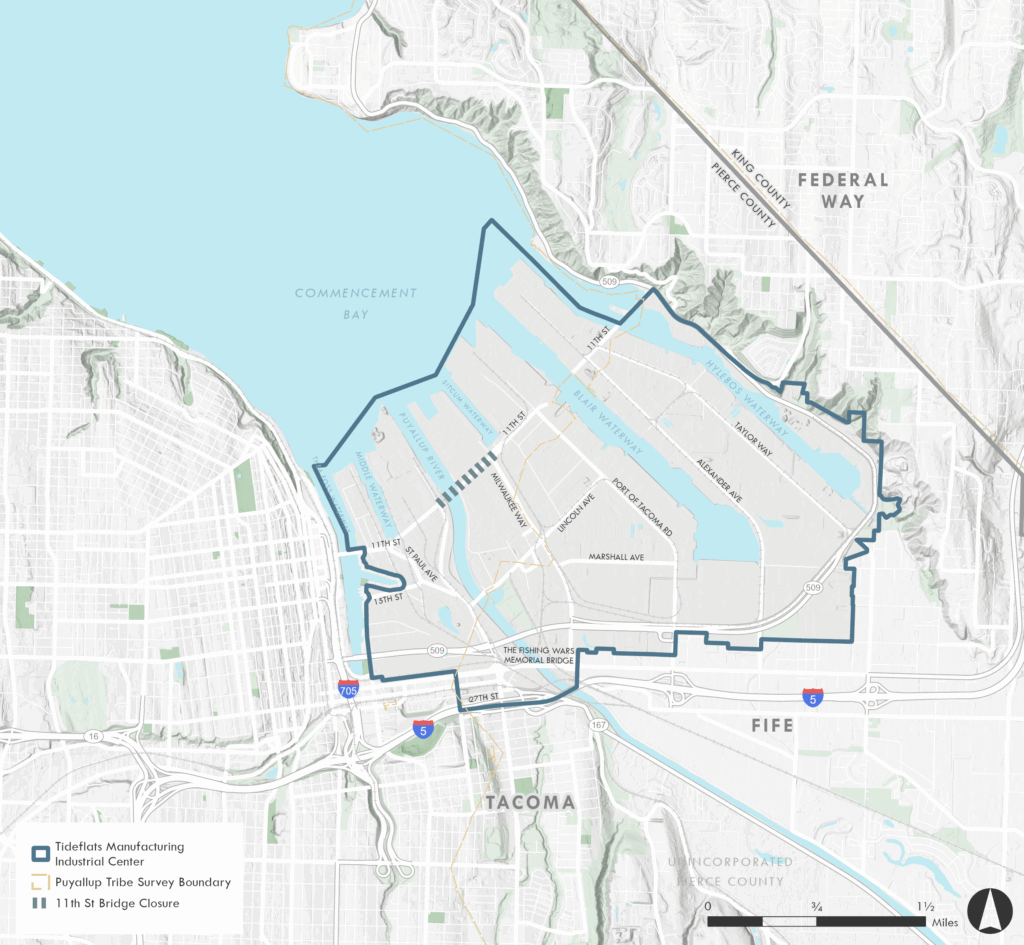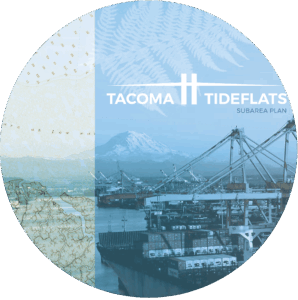Tacoma tideflats subarea plan
Tacoma, WA / 2025
Project started while at BERK Consulting
OVERVIEW
Seva Workshop is currently leading a subarea planning process for the Tacoma Tideflats. With an area of over 5,000 acres of waterfront land providing habitat, the Tideflats is the ancestral lands of the Puyallup Tribe of Indians, an economic center that includes industrial and manufacturing and maritime activity, as well as the location of a working port. The Plan area is based on the current Port of Tacoma Manufacturing Industrial Center (MIC) which is defined both in the Puget Sound Regional Council’s VISION 2040 as well as the City of Tacoma Comprehensive Plan.
The process is intended to create a shared long-term vision and more coordinated approach to development, environmental review, and strategic capital investments in the Tideflats. It includes a multifaceted engagement effort including inter-agency involvement with the five participating governments (the cities of Tacoma and Fife, the Port of Tacoma, Pierce County, and the Puyallup Tribe) and communities.
The engagement effort implemented a broad range of tools to gather input from a variety of communities. This includes direct engagement with property and business owners, as well as facilitation of an advisory committee. Given the pandemic and the demographics of the community, materials and activities need to be provided in a range of formats and in multiple languages. Engagement activities include virtual and recorded meetings, social media and mobile-optimized web content, eye-catching on-site signage, phone calls, and placing hard copy feedback tools at essential businesses.


The Tideflats Subarea Plan is an innovative plan that can be a model for industrial area planning. The Subarea Plan is innovative not only for its planning outcomes but also for the way it was created—through regional, tribal, and stakeholder collaboration, with sustainability and inclusion at its core.
Unique Multi-Government Collaboration
- The plan was developed through an unprecedented collaboration among five governments: the City of Tacoma, Puyallup Tribe of Indians, Port of Tacoma, City of Fife, and Pierce County. This coordinated governance ensures that industrial growth, environmental health, and regional needs are balanced and that decisions are made with input from all affected communities, including Indigenous leadership.
Integration of Indigenous Values and Rights
- The plan explicitly honors and embeds the cultural, economic, and environmental connections of the Puyallup Tribe in the region’s future. It includes provisions to respect tribal rights and incorporate Indigenous priorities.
Balancing Industrial Growth and Environmental Restoration
- Unlike many port or industrial zone plans, the Tideflats Subarea Plan takes a comprehensive approach to both economic success and ecosystem restoration. It sets forth coordinated actions to improve water quality, restore biodiversity, and integrate habitat restoration with industrial operations, not just as a mitigation effort but as a core principle of the plan.
Advanced Climate and Resilience Policies
- The plan goes beyond legacy environmental requirements by embedding innovative climate resilience strategies, including actions for decarbonization, proactive adaptation to sea-level rise, and a focus on clean energy industries. This positions the Tideflats as a test bed for green industrial transitions, supported by green building practices and sustainable infrastructure.
Transportation and Infrastructure Innovations
- There is a holistic emphasis on expanding electric transportation infrastructure and reducing carbon emissions from freight and commuting. The plan also prioritizes public access, multimodal connectivity, and green infrastructure investments to enhance both logistics and quality of life.
Deep Stakeholder and Community Engagement
- The planning process itself is innovative—engagement has included a broad mix of property owners, advisory groups, diverse residents, and business interests, and has relied on extensive virtual, multilingual, and in-person outreach over seven years. This ensures the long-term vision has buy-in from all constituents.
Flexibility, Accountability, and Adaptation
- Policies encourage economic and industrial adaptation so existing and new industries can innovate, meet environmental standards, and remain globally competitive, while ensuring ongoing stakeholder dialogue and accountability through implementation.
Model for Other Cities
- The holistic and participatory approach, especially its fusion of economic, ecological, and cultural priorities, is a replicable model for other cities wrestling with the future of significant industrial zones, especially where waterfront, tribal rights, and environmental needs intersect.












